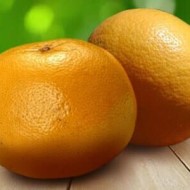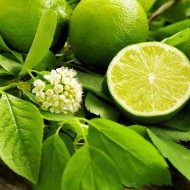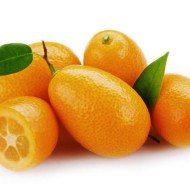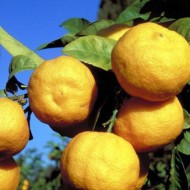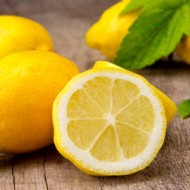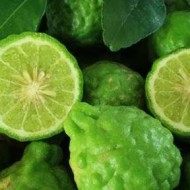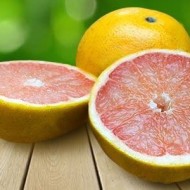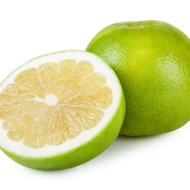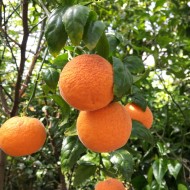34 common types of citrus fruits with names, descriptions and photos
Content
- 1 General characteristics of citrus fruits
- 2 Video "All the benefits of citrus fruits"
- 3 Beneficial features
- 4 Potential harm
- 5 Brief characteristics of all species of the genus
- 5.1 Agli, or coalfruit
- 5.2 Orange
- 5.3 Bergamot
- 5.4 Gayanima
- 5.5 Grapefruit
- 5.6 Yekan
- 5.7 Ichandarin, or yuzu
- 5.8 Cabosu
- 5.9 Calamansi
- 5.10 Calamondin, or citrofortunella
- 5.11 Karna
- 5.12 Kumquat
- 5.13 Lime
- 5.14 Limequat
- 5.15 Lemon
- 5.16 Limandarin
- 5.17 Mandarin
- 5.18 Mandarinquat
- 5.19 Mineola
- 5.20 Natsudayday
- 5.21 Orangelo
- 5.22 Papeda
- 5.23 Pomelo
- 5.24 Orange
- 5.25 Sweety
- 5.26 Fortune
- 5.27 Tangor
- 5.28 Tangelo
- 5.29 Thomasville
- 5.30 Citrandarin
- 5.31 Citrange
- 5.32 Citron, or cedrate
- 5.33 Hassaku
General characteristics of citrus fruits
Citrus plants - evergreen shrubs and trees - have a fairly long lifespan. Crops are often grown exclusively for decorative purposes, due to the aesthetics of the appearance of citrus fruits.
Most of the stems of these trees and shrubs have thorns. The leaves are often dense and rich in essential oils. The flowering of citrus fruits is the most long-awaited period for many gardeners, because it is at this time that the plant is crowned with a huge number of delicate white flowers.
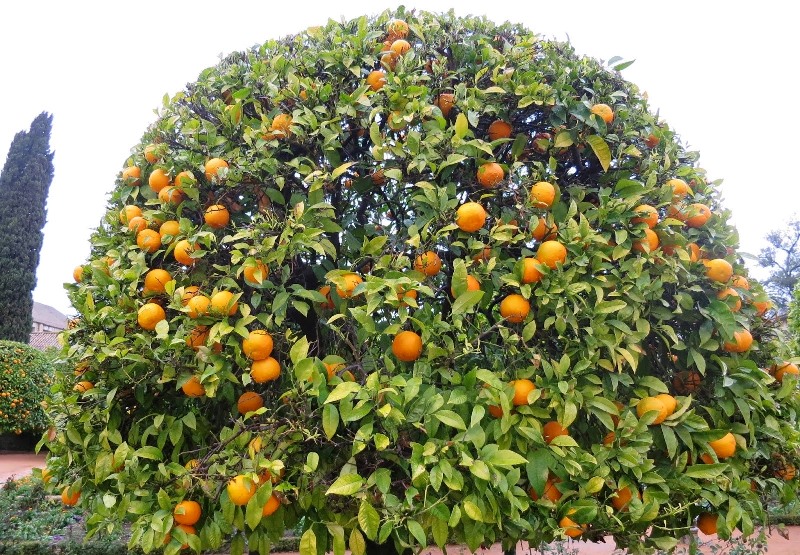
The fruits of citrus trees are peeled. It differs in the degree of density and thickness. It is the peel that contains the maximum amount of ether, the benefits of which are undeniable.
The next layer of fruit is the shell, characterized by a bitter taste. It connects the outer layer of the fruit to the pulp. The latter is presented in the form of slices filled with juice. In addition, each lobule contains bones. Their number depends on what species the fruit belongs to.
The main conditions for growing these crops include:
- Sunlight. Plants need constant lighting. However, it should be remembered that the light must be diffused. Direct rays have a detrimental effect on citrus fruits.
- Moisture. Regular and moderate watering is one of the basic rules of care. But waterlogged soil can provoke rotting processes.
- Shelter for the winter. These crops are not frost-resistant. Low temperatures, strong winds and even a slight draft can destroy the plant.
Video "All the benefits of citrus fruits"
This side story tells about the beneficial properties of citrus fruits.
Beneficial features
Citruses have a huge amount of useful trace elements:
- organic acids;
- pectins;
- mineral salts;
- vitamins;
- phosphorus;
- potassium;
- calcium.
Especially useful are the essential oils found in the peel and leaves of citrus fruits. They have a bactericidal and tonic effect on the skin, improve digestive function, stimulate the activity of the brain, and stabilize the functions of the cardiovascular system. In addition, citrus essential oils have a calming effect. That is why they are often used in the manufacture of massage oils.
Potential harm
Despite the number of useful properties that citrus fruits have, you should refrain from using them when:
- ulcerative diseases of the gastrointestinal tract;
- increased acidity;
- pancreatitis;
- jade;
- gastritis;
- hypertension;
- pyelonephritis.
Given that most fruits contain significant amounts of sugar, citrus consumption should be minimized for people with diabetes.
It is recommended to use fruits with extreme caution for owners of sensitive tooth enamel. The fact is that the juice contains a huge amount of organic acids, which damage the enamel to varying degrees.
To minimize discomfort and reduce the risk of negative consequences, rinse your mouth with water after each consumption of citrus fruit. This procedure should be done after eating pineapple, because it also contains organic acids, including ascorbic acid.
People who are undergoing antibiotic therapy should consult with their doctor. Antibiotics are practically incompatible with the acids found in the fruit. At best, the fruit simply neutralizes the effect of the medication.
Brief characteristics of all species of the genus
Today citrus fruits are used not only in the culinary business, but also in cosmetology and perfumery. The types of these plants are very diverse. Initially, only citron, pomelo, lime and tangerine existed in nature. Almost all the remaining species, and their list is quite large, were bred by selection.
Agli, or coalfruit
This species combines several types of citrus fruits: tangerine, grapefruit and orange. Literally translated from English, the name of the fruit sounds like "ugly". This is due to the appearance of the fruit: a dense, wrinkled peel of yellow color with a greenish tint. But agli's taste completely compensates for its appearance.
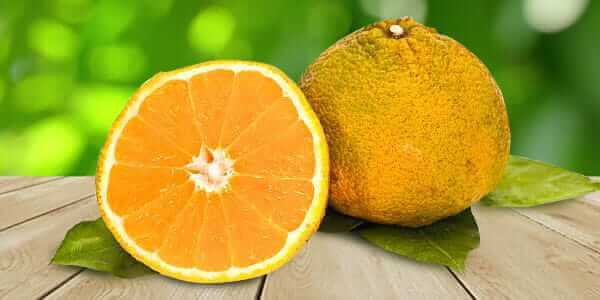
Orange
The homeland of citrus is China, which is why its second name is the Chinese apple. The fruit is obtained as a result of selection. The pulp of the fruit is considered especially valuable, but the peel is also used. For example, wines are infused on orange peels.

Bergamot
The name is associated with the place where the fruit was first cultivated - the Italian city of Bergamo. Bergamot is a pear-shaped fruit with a bitter pulp.

Gayanima
The fruit resembles a rather large lemon. It has a rich eucalyptus scent and a sour taste with hints of ginger. It is used in the preparation of marinade.
Grapefruit
Obtained by natural hybridization of pomelo and orange. The fruit is large, very aromatic. The pulp is sour, with a characteristic bitterness.
Yekan
The fruit first appeared in Japan. It has a thick skin and a sour-bitter flesh.
- Yekan
- Grapefruit
- Gayanima
Ichandarin, or yuzu
The species is obtained as a result of hybridization of mandarin and lemon. The pulp tastes like lemon with tangerine notes.
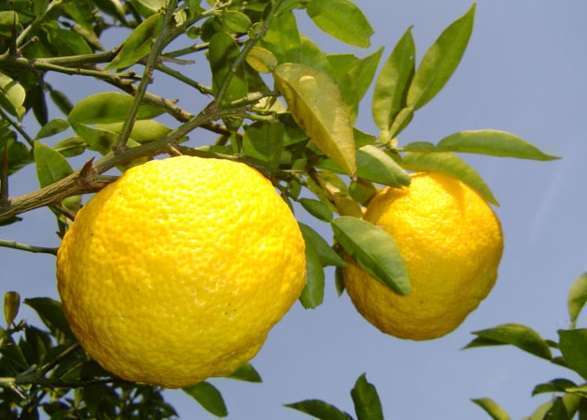
Cabosu
China is considered the birthplace of kabosu. The fruit is characterized by a green skin and a specific sour taste. Kabosu juice is often used in fish dishes.
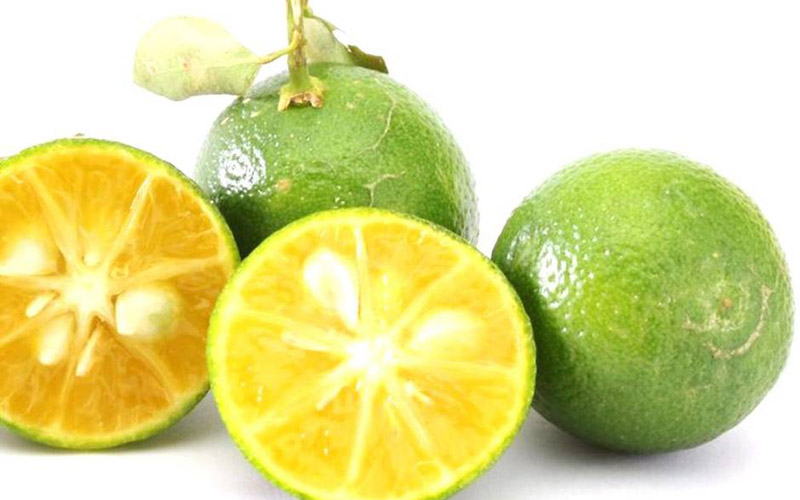
Calamansi
Calamansi's second name is musky lime. It is similar to regular lime, but different in taste - the pulp combines lemon and tangerine.
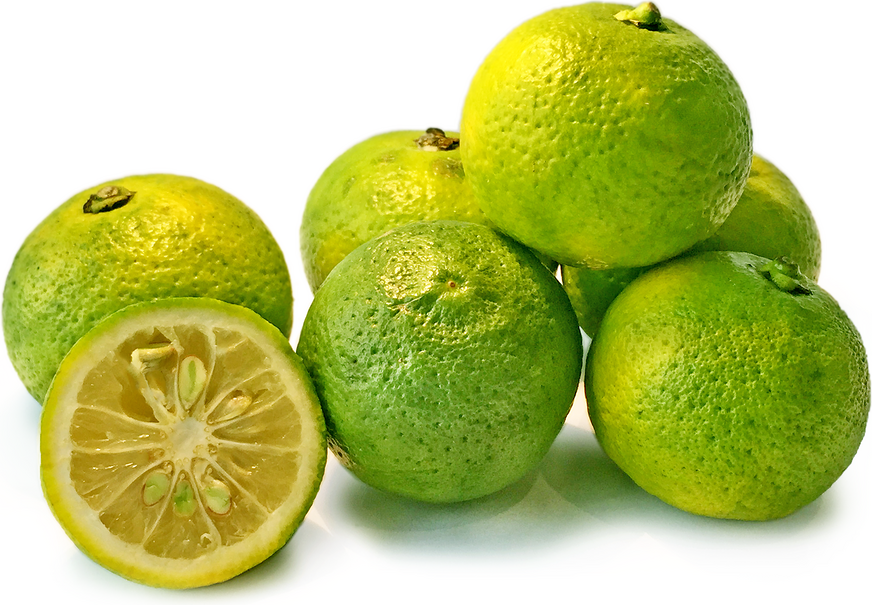
Calamondin, or citrofortunella
Bred by crossing kumquat with tangerine. The plant feels comfortable at home. Fruits in small orange fruits with a characteristic sour taste.
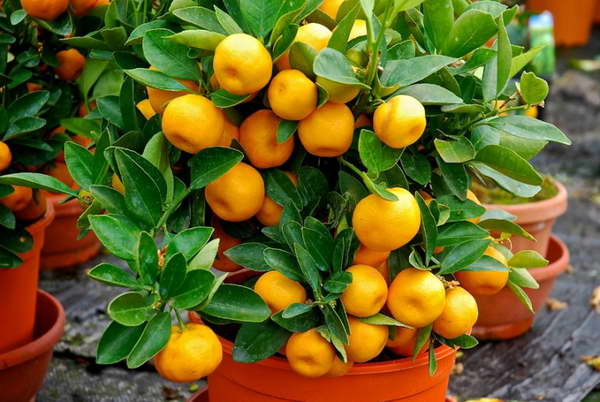
Karna
The fruits are large and have a characteristic nipple. The pulp is sour, with a bitter taste, very juicy. As a rule, fresh carna is not consumed.
Karna is often used in the production of wines, liqueurs, marmalade.
Kumquat
In appearance, the kumquat resembles a small orange. The peel of the fruit is sweet and the flesh is sour.
Lime
Fruits are medium-sized, ovoid.The skin is greenish, the flesh is very juicy and sour. Lime is actively used in the preparation of cocktails.
- Lime
- Kumquat
- Karna
Limequat
The species was obtained during the selection of lime and kumquat. The skin of the fruit is sweet and the flesh is sour. Limequat is actively used in the confectionery industry.
Lemon
It is a natural hybrid that appeared in Southeast Asia. The fruit is oval in shape, characterized by the presence of a yellow rind and very juicy pulp.
Limandarin
A hybrid of lemon and tangerine. The taste combines sweetness with characteristic sourness. The fruit is used in the preparation of marmalade and candied fruits.
- Limandarin
- Lemon
- Limequat
Mandarin
A characteristic feature of mandarin is its thin skin. The pulp is divided into slices, has many seeds. The taste depends on the variety of tangerine: there are both sour-bitter fruits and very sweet ones.

Mandarinquat
The fruits are egg-shaped and have a bright pleasant aroma. Taste of tangerine quat is sour, with a slight bitterness.

Mineola
Obtained by crossing grapefruit with tangerine. The fruit is pear-shaped, has a thin peel and sweet and sour pulp.

Natsudayday
In appearance it resembles an elongated lemon. The rind is dense. The pulp is dryish, with a characteristic sour taste. Natsudai dai is consumed both fresh and thermally processed.
Orangelo
The fruit is similar in appearance to grapefruit. Orange tastes like orange. The pulp is used for the preparation of candied fruits, marmalade. In addition, the fruits are often canned.
Papeda
Green fruits have a characteristic wrinkled rind with yellowish spots. The pulp is inedible, but it is actively used in cosmetology.
- Natsudayday
- Orangelo
- Papeda
Pomelo
Citrus is native to China. Pomelo is a very large fruit, weight can reach 10 kg. The fruit is sweet, so it is eaten fresh.
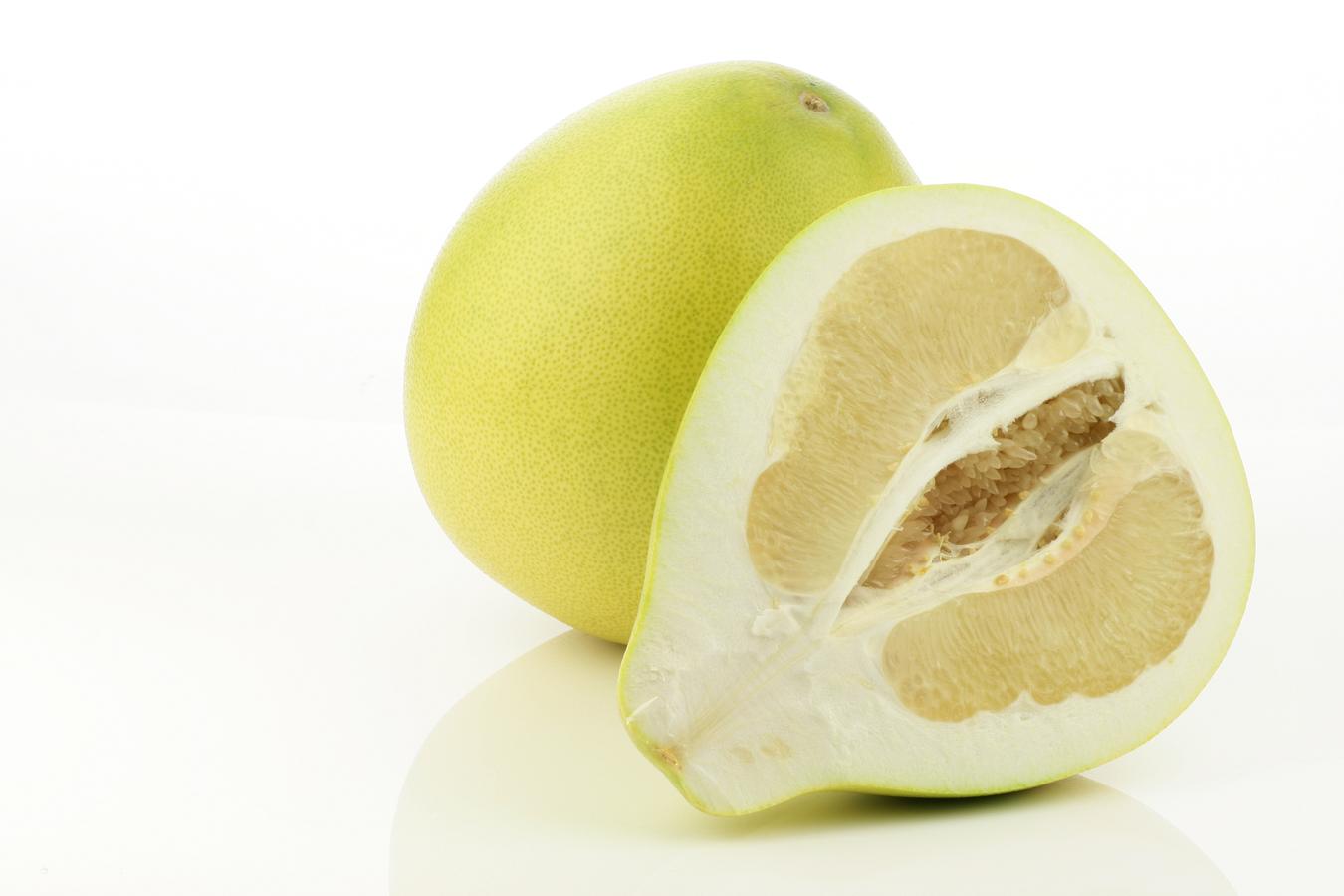
Orange
Orange is a very sour fruit, so it is not eaten. Often, a shrub with round orange fruits is planted in gardens as a decorative element.
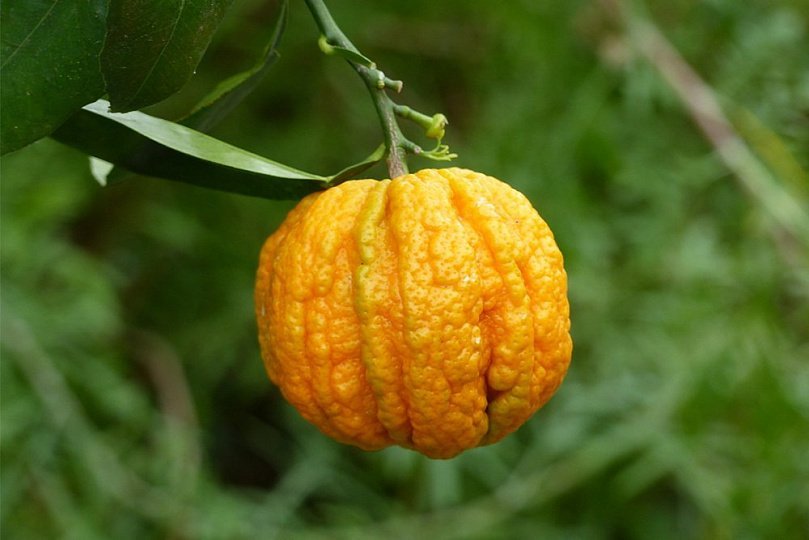
Sweety
The name of the fruit comes from its extremely sweet taste. Light green filaments have a characteristic white film, under which are fruit slices.
Fortune
Outwardly, zander resembles a green tangerine. The pulp is similar to lime, very sour and juicy. Sudach juice is often used to make marinades.
According to the degree of acidity, zander completely replaces vinegar.
Tangor
Citrus is obtained by crossing the sweet varieties of mandarin and orange. Tangor has a sweet taste and many seeds.
- Tangor
- Fortune
- Sweety
Tangelo
The fruit is similar to the usual grapefruit, but much smaller in size. In addition, the tangelo is sweet, which also distinguishes these fruits. The characteristic bitterness is considered common to grapefruit and tangelo.
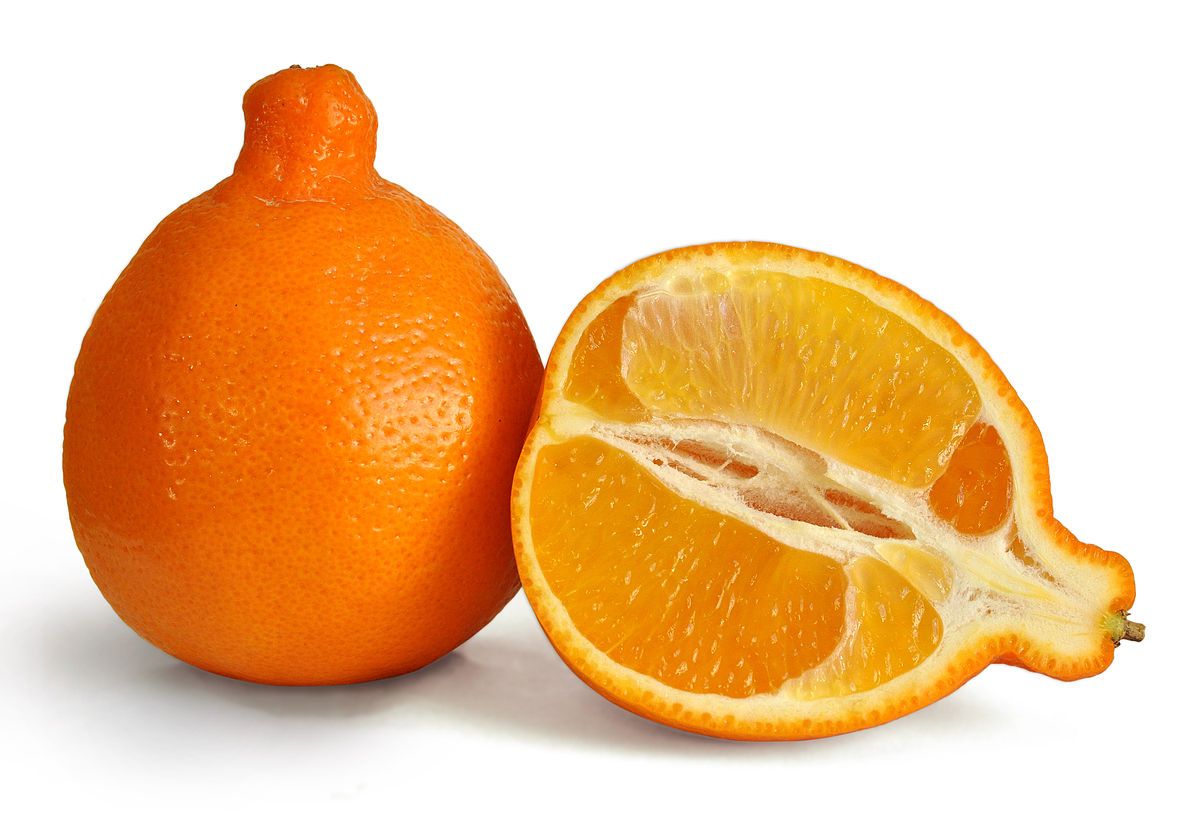
Thomasville
The fruit is similar to lemon, pear-shaped. Ripe Thomasville tastes like lime.
Citrandarin
Bred by crossing mandarin and lemon. The color of the skin is orange, the taste of the pulp is sweet and sour.
Citrange
A hybrid species characterized by a round shape and yellow skin. Citrange is used to make preserves and jams. Fresh fruit is usually not eaten.
- Citrange
- Citrandarin
- Thomasville
Citron, or cedrate
Citron is characterized by its large size, non-uniform surface, and a complete lack of aroma. The citron fruit has practically no pulp.

Hassaku
Hassaku grows to a fairly large size, has a thick rind. The taste of the pulp is sour, with a characteristic bitterness. This citrus is consumed fresh.
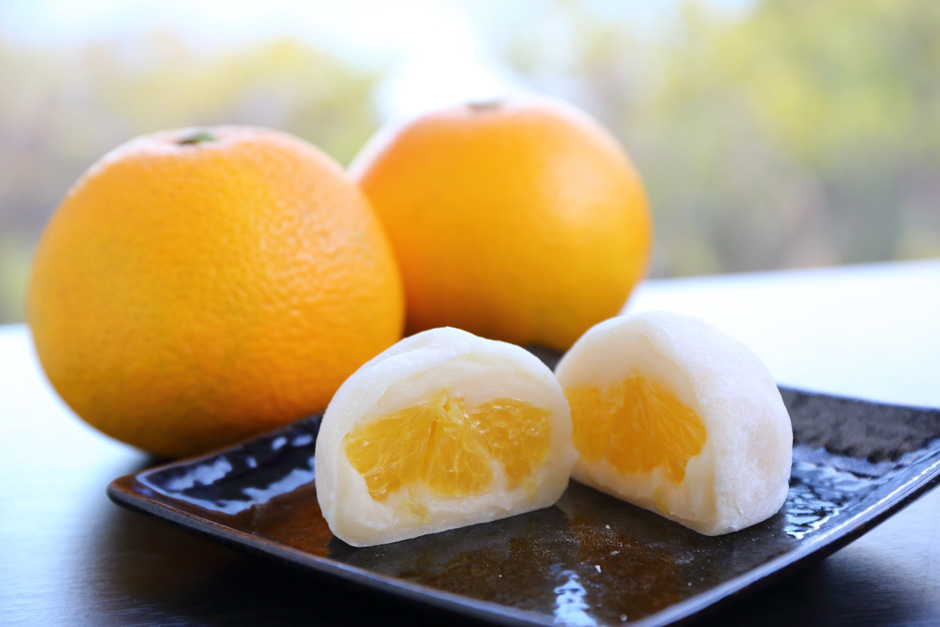
The variety of citrus plant species provided valuable raw materials for many areas of activity, including cooking, cosmetology, and medicine. Exotic fruits are characterized by a rich composition and are able to replenish the body's vitamin reserves. In addition, unusual trees are often used as an element of landscape design.

